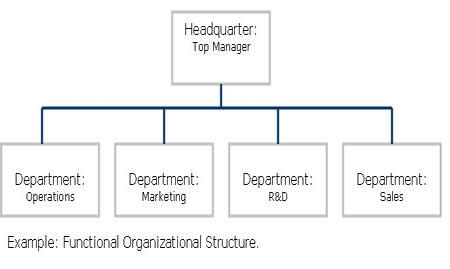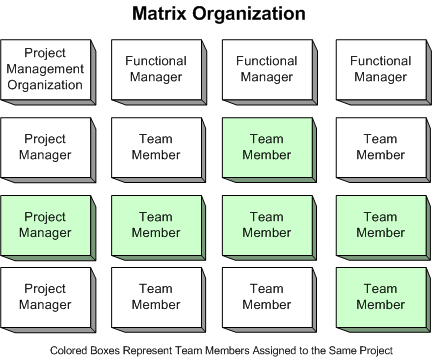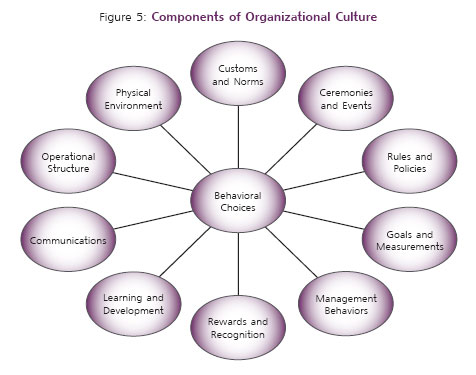Introduction
Different organisations have adopted different approaches to leadership and management. They are often faced with a wide variety of management strategies from which they are to select the most effective and efficient approach in their activities. Management and leadership are among the key principles of the organisation’s theory and therefore have a great bearing on the organisation’s approach that an organisation may adopt.
From a theoretical stand, it is very easy to capture the operations of any organisations into a given organisational theory. However, it is much more difficult to fit an organisations leadership and management strategy into a specific theoretical leadership and management approach. These elements of the organisation complement each other in maintaining a good and stable environment for the organisation.
Since the onset of the industrial revolution, the interest in organisational theory has grown tremendously to embrace the modern trends management leadership and organisation. It is therefore of key importance that an organisation maintains a suitable organisational theory for the continued growth and development of the organisation.
Besides organisation theory, culture and structure have become important parts of the modern business organisation to the point that they are inseparable. The two aspects will as well be tackled alongside theory in this part of the paper.
Analyse how organisational theory underpins principles and practices of organising and of management
Organisational theory can be defined as the concept of division of labour that allows every member of the organisation to perform and play a role in the operation and coordination of the activities of such an organisation. It allows for the direction of the various human efforts towards a given goal or objective.
The basic role of organisation theory is to provide an administrative approach that reduces the level of spending increases the level of production and maximises the organisation’s returns. Organisation theory, therefore, engages al the aspects of the organisation into a continuous and consistent flow of resources. The organisational theory represents a wide variety of interests that have a stake in the organisation. The consumers, on the one hand, rely on organisational theory to secure their interests in as far as quality and consistent service or product delivery are concerned.
Small and large businesses alike rely on the organisational theory to effectively manage and utilise their invested resources and to represent the best interests of such owners. They, therefore, stand to benefit or lose if the organisation adopts an ineffective approach to management and leadership
They, therefore, rely on the guidance and direction of organisation theory in ensuring that they remain objective and focused on the organisation’s mission and vision. The organisation theory, therefore, acts as a guideline to the achievement of the organisation’s objectives.
The government, for instance, is a stakeholder as well as an organisation that uses an implements organisation theory. It, therefore, is of importance if the various organisations under its control and management adopt appropriate organisational approaches in the operation of their activities. Every organisation operates under clearly defined principles of practice and management. It has specific provisions that offer controlling planning coordinating and organisation of the organisation through structural and strategic methods and procedures. The organisation theory is therefore developed and constructed based on organisations basic principles of management.
The relevance and influence that organisational theory has in the management and organisation go to define the management authority spanned of control, obligation specification and specialisation.
The organisation’s theory also defines the system in which authority will be divided and allocated in the organisation, this in effect it defines the manner in which communication will take place a well as the chain of command that will be followed by the employees in their operations. It provides for the various organisation alternatives from product organisation to the functional organisation as well as the matrix organisation. Each of these organisation options can be adjusted and restructured under the organisation theory to suit the organisation’s goals and objectives.
Organisation theory summarises the authority and jurisdiction that every employee has over others in the organisation. It allows the organisation to avoid duplicating mandates and authorities. It allows for a slim margin of safety between the level of leadership command and supervision ensuring that these do not overlap and cause conflict in the organisation and instead ensure that these concepts are appropriately managed and coordinated. The organisation theory, therefore, allows for the provision of clear guidelines that define the jurisdictional limits of every employee.
Due to the diverse nature of the employee obligations in the organisation, some jobs require a specific and undirected sense of attention and specialisation. Others, however, can be appropriately substituted or alternatively undertaken. Organisation theory allows the management to make appropriate decisions as to which approach is most relevant and effective in the execution of the organisation’s activities. The organisation theory acts as a management vehicle that conveys him management’s activities to fulfilling the interests of the various stakeholders. The structures processes and procedures that the management adopts are guided by the organisation’s theory and approach.
The organisation’s theory develops certain pertinent obligations to the organisation that go towards implementing the organisation’s objectives and mission. The sole objective of an organisation is either to increase the profitability of increasing the value of such an organisation. This, therefore, implies that the management is under a responsibility to monitor and regulate the levels of performance through structured activities and designed organisational processes.
The organisation also needs to develop a well-researched corporate brand strategy that subscribes to the organisation’s approach. The organisation’s theory, therefore, offers a roadmap to the marketing department to follow the developing an appropriate brand strategy. Organisation theory also acts to guide the organisational consciousness to technological advancements and therefore places an obligation on management to identify understand and effectively service the organisation’s information needs
In as far as operations are concerned the organisation’s theory serves to create and maintain a need for management interconnection and organisation, it, therefore, ensures that the management remains conscious of the technical structure as well s the socio-cultural aspects of the organisation that need to be constantly monitored. This, therefore, maintains a specialised and well-defined responsibility on the management of the organisation to maintain a smooth and clearly denied relationship with the customer’s suppliers and distributors as well as all other stakeholders
The organisational theory places the greatest responsibility for the human resources department, which is responsible for the recruitment and compensation of the employees in the organisation. The organisation’s theory offers reliable information on the change parameters that the organisation needs to monitor to predict labour trends in the labour market.
Approaches to management and theories of McDonalds and Coca-Cola companies
The risky nature of the business environment has increased the amount of importance that has been given on the planning and organising functions of the organisation. Large and medium-sized companies with an objective of hedging against uncertainty have adopted varying approaches to management and management theories. The Coca-Cola Company, for instance, has adopted a highly centralised administrative structure of management. It has a worldwide customer base with groups among others North America Latin America Africa and the pacific.
Due to the slowed nature of the company’s growth, the company has been forced to shift to a more decentralised structure that has been to keep up with the demands of the increase in the number of groups and branches across the globe. The company has adopted a management science approach to the management of the activities of the company. This qualitative management approach allows the company to monitor the activities of the various groups in details of sales and revenue from a centralised management base. The approach perceives management as the most important tool in problem-solving with the help of mathematical techniques.
The management problems are, therefore quantified and solved in the form of mathematical numbers and formulas as well as symbols. Every management problem is assumed quantifiable in number terms (Learning Media 2010). Decision-making and system analysis, as well as other related organisational aspects, are controlled and regulated through a complex and concentrated structure of formulas and methods.
This has had a great impression and impact on the management directs their approach and thinking towards the achievement of the companies objectives. The management approach has also increased the level of accuracy in the activities of management.
The McDonald group, on the other hand, has had a colourful history of success in the fast-food chain and industry in modern times. With over 30 000 outlets and restaurants in more than 100 countries across the globe, the company has benefited a lot from its operational management approach. Unlike the management science approach, the operational management strategy allows the management to examine and monitor the activities of the various departments taking a keen interest in the various functional concepts and principles that are to be followed in the activities of the managers.
This management approach perceives of managerial roles and functions as being universal and similar in all the restaurants in all levels of the management structure. The conceptual framework of the various policies and practices in the company are based on the identification of the specific principles of practise applicable to every level of management. This management approach has also allowed the company to have an effective and efficient conflict management mechanism that is centred on pluralisation of power and a transformational leadership strategy.
Organisational structure and culture
The organisational structure is the mechanism through which an organisation coordinates efforts and work to produce outcomes according to the organisation’s mission, vision and objectives. It’s important to note that the coordination above is achieved through supervision. Ogbonna & Harris (2000) on their part defines organisational structure as the sum total of activities including task division, coordination and supervision that primarily aim at achieving an organisation’s objectives. There are many organisational structures, such as matrix and divisional design. A typical organisation structure is shown in the figure below.

In a functional structure, groups of people in an organisation with similar positions and skills come together to perform tasks and activities for the sole purpose of improving effectiveness in an organisation.

The divisional structure, on the other hand, overlays functional groupings. It’s also referred to as the product structure. Compared to a functional structure, intergroup coordination relationships are more effective in divisional structure. The divisional structure can be the product, market or geographically oriented.
The matrix organisation design is much more complicated than other structures discussed above. Groups are grouped simultaneously in two ways; through the function they perform and the product, they work on. Organisations mainly use this structure to take advantage of the individual strengths of members of a group.

The advantages of the above structure can be discussed through motivation and coordination perspectives. In terms of coordination, there is easy communication among specialists in a functional structure. This helps in quick decision making and learning in the group. The divisional structure, on the other hand, has advantages in terms of coordination that include the production of quality products and the delivery of good customer services. There is also better communication, teamwork and facilitated decision-making and problem-solving. Matrix too has numerous advantages in terms of coordination. They include fast product development, optimised communication and cooperation among members and facilitation of innovation and creativity among members.
In terms of motivation, functional structure helps a great deal in the facilitation of performance evaluation for supervisors and peers, creation of teamwork and creation of a career ladder. Division structure, on the other hand, has advantages in terms of motivation that include a clear connection between performance and reward system, service that is customised and easy identification with the division. In a functional structure, the one advantage that the structure accords members is the freedom and autonomy that members have to take responsibility for their work-related actions and activities.
The structures do have a few disadvantages. Functional structure is critiqued as having shortfalls in serving the needs of all products and regions and lacking good coordination. The main disadvantages of the divisional structure are the high costs associated with operating and managing costs. It’s also said to have poor communication between divisions as well as the existence of conflicts between the divisions. In the matrix structure, there is a likelihood of increased conflicts and ambiguity in terms of the roles. There are also high levels of stress and very limited promotion opportunities for members.
Organisational culture
Organisational culture describes the attitudes, behaviours and beliefs of a particular organisation. IIt constitutes of the norms and values that form the basis of the relationships among stakeholders in an organisation. Figure 2.0 below illustrates the important components of organisational culture.

Besides the above basic definition, there is a lot of input from scholars on what organisational culture entails. Deal and Kennedy, for instance, emphasised the process culture where people got bogged down by the way things are done in an organisation. In such situations normally, the achievement is not a priority. Charles handy, on the other hand, fronted four types of organisational culture, including power culture, role culture, task culture and person culture. In power cultures authorities is vested on a few people who make almost all the decisions of the organisation.
In these business settings, decisions are swiftly made since there is little bureaucracy. Though risky times, quick decision making is advantageous to business since red tape can easily lead to easily avoidable loses. Role cultures are characterised by a delegation of authority and power within a precisely defined structure. Such business organisations are hierarchical bureaucracies which value consistent systems. Though the risk is minimised, decision-making is slow and characterised by rigidity. Overall, it’s not good for business, especially when swift decisions need to be made.
In the task, culture organisation are led by expertise teams with specialist market experience. In a matrix structure, authority is structured along multiple lines to which people report. Because of the seasoned expertise present in the organisation, task cultures tend to succeed highly. In-person cultures, people are in business to fulfil their desires and goals before those of the organisation. Such organisations have difficulty surviving for long because the individualism kills the very essence of an organisation. Other organisation cultures are summed up in the figure below.

Relationship between culture and structure
The link between the two is that structure is the mechanism through which efforts, work and activities are regulated and coordinated to produce outcomes that fulfil the aims of the organisation’s culture. In this regard, the structure acts as the conduit in the system that individuals use to work in order to fulfil organisational culture. There is consensus that strong organisational cultures most likely result in efficient and effective structures.
According to Ogbonna & Harris (2000), it’s difficult to separate culture and structure. This is because while structure spells and defines the positions of the organisations, the roles and the personnel that go along with the positions are defined by organisational culture.
Factors influencing individual behaviour at work
In an organisational setting, the relationship between leadership and individuals is bidirectional. Normally the manager continuously assesses the behaviour of the employee while the individual continually assesses the manager’s perspective for adoption (Ogbonna & Harris 2000). A successful bi-directional process that is shown in the figure below, the behaviour of both will be congruent. There is on the part of the employee a continuous perception of both work and non-work activities that are affected by the following factors.
Abilities
An individual’s behaviour at work is greatly affected by both physical and cognitive abilities. Depending on what is desired, any employee person who finds him/herself on whatever side is affected accordingly.
Gender
Despite the fact that men and women have equal mental capabilities, there are marked differences in how they both behave in the workplace. This depends on their roles both in and out of work, physicality brought by biological differences.
Perception
Perception is mainly done through stereotyping and selective perception. The above conjure subjective realities in people hence influencing their behaviours in work environments.
Attitude
This is the abstract response that is learnt through the cognitive process of an individual. Depending on the organisation setting, individuals can develop different attitudes that, in effect, make up their behaviour.
Conclusion / Summary
The management approach of an organisation offers a guideline to the management practices and principles. Various organisations adopt strategies and approaches that suit the industry best and therefore adjust individual approaches to suit the organisation needs. It’s also important for organisations to nature and develops sound organisational cultures and structures for better delivery of organisational goals.
References
Blackler, F. and Kennedy, A. (2003) The Design of a Development Programme for Experienced Top Managers from the Public Sector. Working Paper, Lancaster University.
Cox, K.B. (2003 ) The effects of intrapersonal, intragroup, and intergroup conflict on team performance effectiveness and work satisfaction. Nursing Administration Quarterly, 23 97-122.
McDonough, E.F (1993) Faster new product development: Investigating the effects of technology and characteristics of the project leader and team.Journal of Product Innovation Management.23, 34-67.
